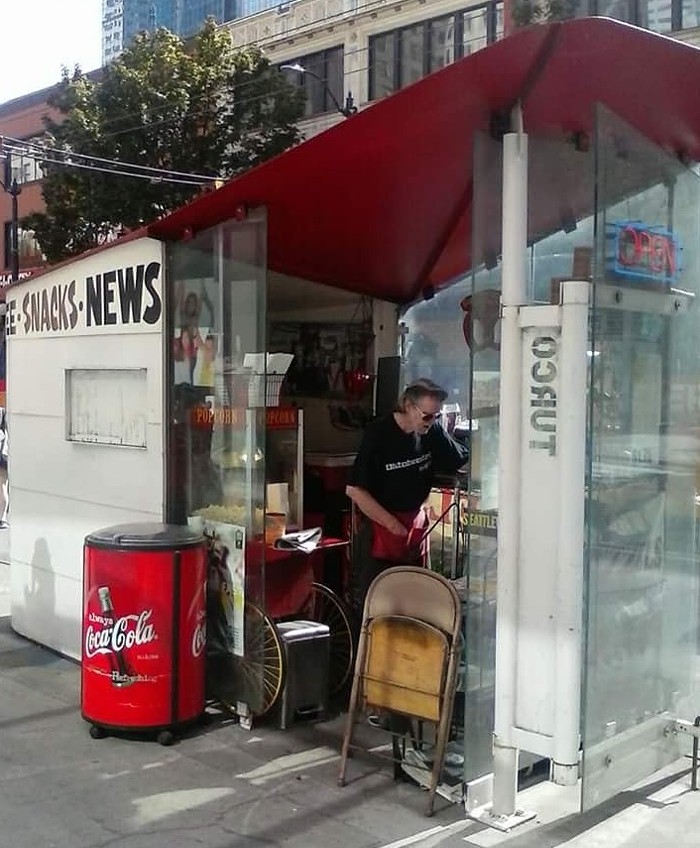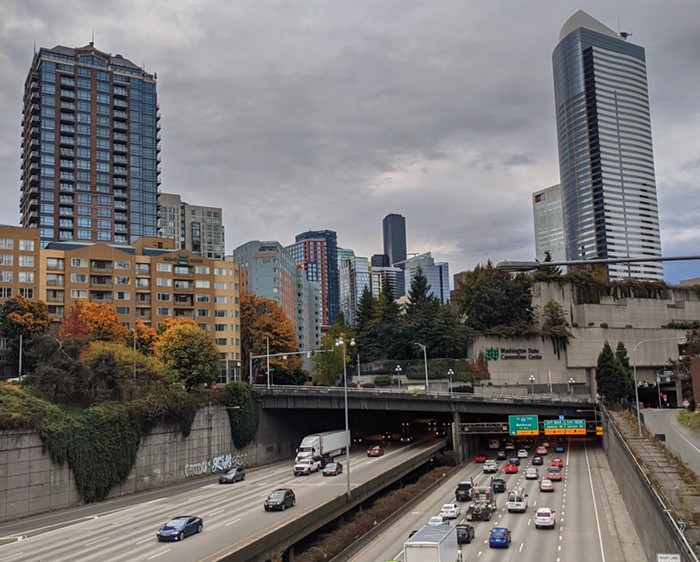The story has been this: Portland's downtown is failing terribly to recover from the pandemic. This claim was recently repeated by a study conducted by the University of Toronto. Portland "had the third-slowest recovery of 63 major cities in the United States and Canada." Why? If you read papers like the Seattle Times, blame, again and again, is placed on progressive politics and sentimental fellow feeling (the root of socialism). At the core of this explanation (though this is never mentioned) is the belief, among a specific class of white journalists, that Portland's Black Lives Matter protests went too far. The idea of Black Lives Matters was, according to this view, more than enough (put a sign in your yard or on your window); taking it to the streets for 100 days, however, was nothing but fanatical and very bad for business. The City of Roses is paying for many progressive sins.
Then a new report about Portland's downtown was cited in an August 27 Oregonian post, "Downtown Portland’s recovery: Better than advertised?" (I have no idea why the editors used the word "advertised" in the headline.) But what was this about? It seems data concerning the Portland business district dramatically changed when its size was redefined—and not by that much. This new definition raised downtown's present activity from a catastrophic 37% of pre-pandemic activity (2019) to a not-so-bad 65%.
Downtown Portland’s recovery: Better than advertised? https://t.co/sIJNh0kcg0
— The Oregonian (@Oregonian) August 27, 2023
Approximately 2.4 million people stopped downtown at some point during July, according to new data from the Portland Metro Chamber. (Some of those 2.4 million are people who came downtown multiple times.) That’s the highest monthly total in more than three years, 65% of the number of pedestrians downtown in July 2019.
The University of Toronto study, by comparison, puts downtown’s recovery at just 37% of 2019 visitor numbers, 61st among 62 North American cities.
The economist Mary C. King correctly criticized the University of Toronto report on August 16 in her opinion piece titled "Claims stating downtown’s pandemic recovery is prolonged lack evidence." She already recognized its flaws and pointed to data that showed "Portland’s office vacancy rate in June 2023 was better than the national average, and better than places that get called 'business-friendly,' like Dallas, Atlanta and Nashville, Tennessee." My recent visit to the city confirmed the points King makes. It's not as dire as the Seattle Times or other mainstream papers and conservative blogs insist it is. It was nowhere near an economic wasteland or overrun by the kind of criminals who, like those at the opening of RoboCop, are totally fearless and free to do anything that comes into their deranged minds. Some businesses were doing very well, others were not. The food was still great, and the city still has, unlike Seattle, lots of legit dive bars.
The problem here is not any of this dying business. It's how the homeless crisis has been reduced to claims and counter-claims of its negative economic impact. Those on the right (KOMO, KIRO, Seattle Times, and so on), say people are fleeing Seattle. Then we, on the left (and, in my case, the Marxist left), have to show a new report that says the exact opposite.
A new CBRE study detailing talent migration trends found that from February 2022 to February 2023, Seattle led all U.S. cities with a 15.2% “in-migration rate” for tech workers with 0-to-3 years of experience. That was well above second-place Austin, at 9.7%, and third-place San Francisco, at 9.1%.
Seattle leads in attracting top tech talent, and Seattle is one of the fastest growing cities in the US, and people are leaving Portland not because of Antifa and other undesirables but, in the words of the previously mentioned economist, in search of "more affordable housing." But this situation—the ravings of the right confronted by the left's hard facts—is not ideal. It means the real and historically deep causes of the homeless crisis are never addressed. All that ends up happening is one side says Seattle/Portland/Vancouver is dying and the other side shows it is not. This situation benefits the right because we on the left end up defending not the homeless but the idea that business activity and growth are what matter (office space occupancy, the number of tech workers, indicators of economic expansion, and so on).
But the job of the left is to go where the right will not. We must say that the capitalist city has never resolved housing affordability. Never. Go back to the 19th century, there are slums. Go to the first quarter of the 20th century, there are more slums. Go to the middle of the 20th century, when public housing is first introduced. It catches in Europe, but not in the US. The latter goes to the suburbs, which are mostly white and highly subsidized (roads, petrol, and long-term mortgages). But here is the interesting thing: Gentrification is not possible without the state's backing of home loans. Gentrification is a postwar development. It cannot happen when housing is completely dominated by market forces. (I will have more to say about this in the future.) Couple this with the demolition of the public solution to housing in the US, and what we see today on the streets of Seattle, Portland, and Vancouver BC: A good number of the poor in a situation lacking even the 19th century's slums.




















